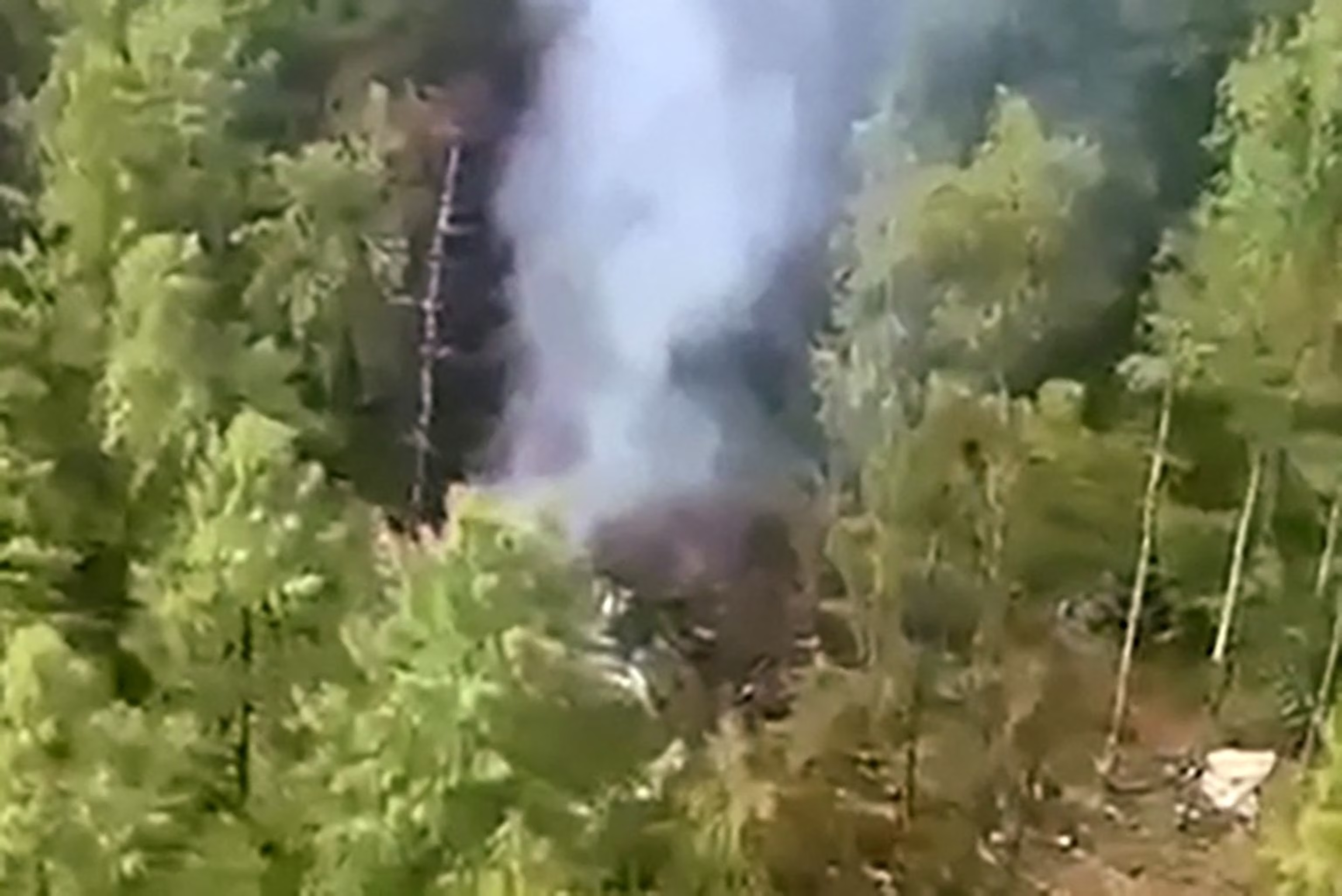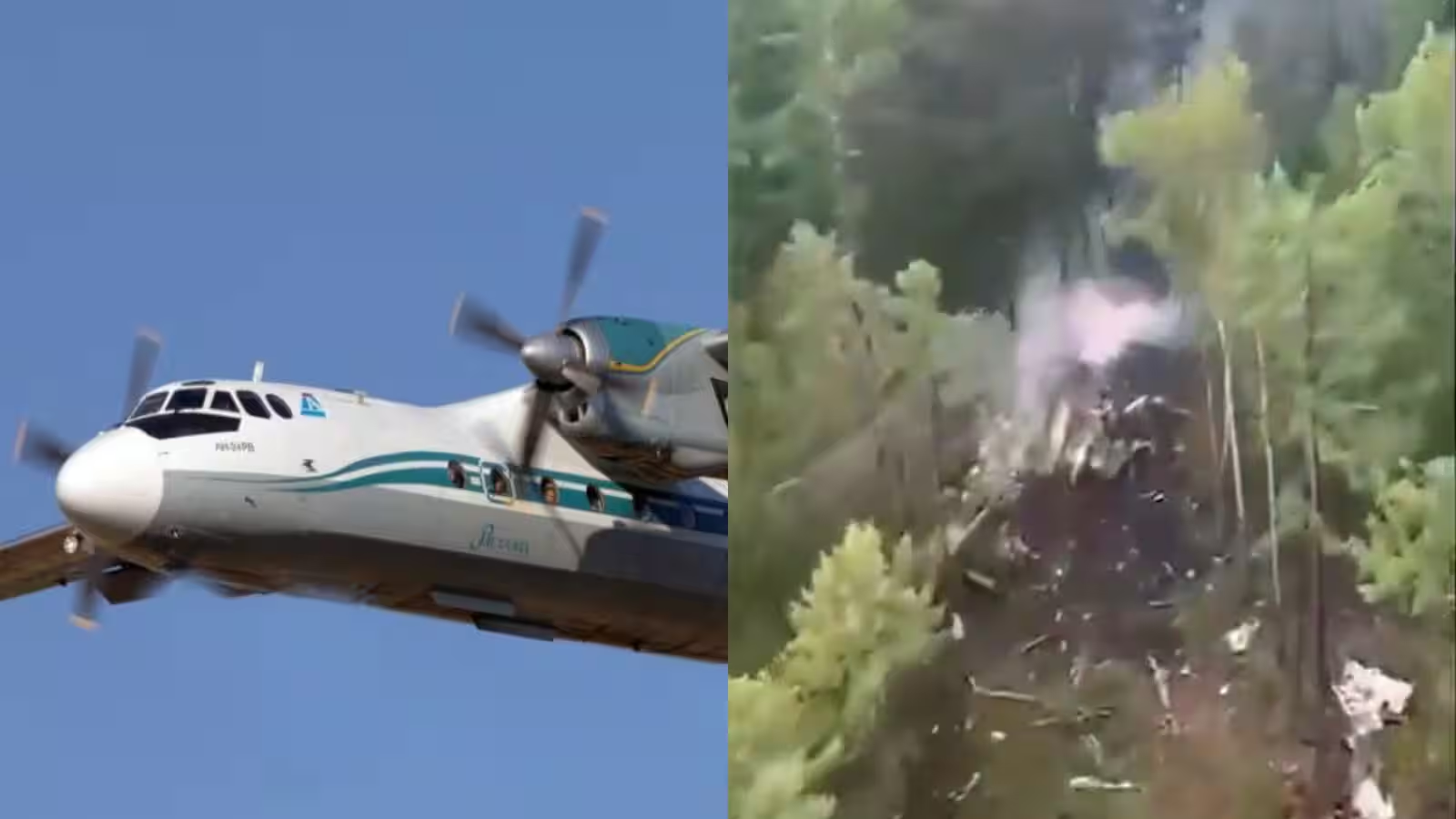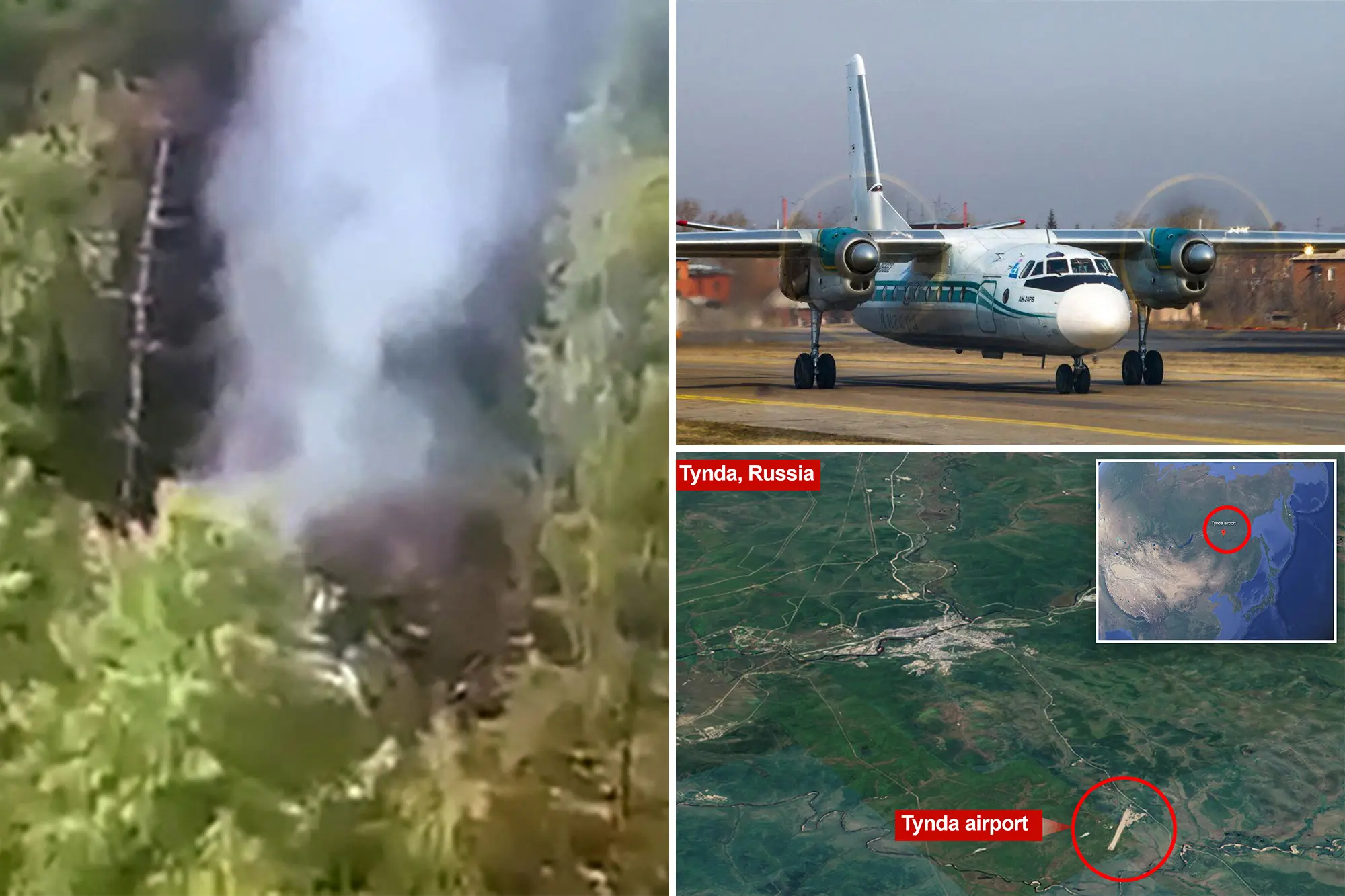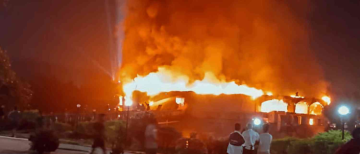July 24, 2025, marked a tragic day in Russian aviation history as a domestic flight operated by Angara Airlines met a catastrophic end near Tynda, in Russia's remote Far East. The accident, which involved a Soviet-era Antonov An-24 aircraft, has resulted in the presumed deaths of all 49 people onboard, sparking grief, shock, and a deep investigation into the causes behind this harrowing crash.

The Crash: A Routine Flight Turned Tragic
The ill-fated flight originated in Khabarovsk, made a stop in Blagoveshchensk, and was headed for Tynda, a small but significant town in the Amur region. Onboard were 49 passengers, including five children, and six crew members—all of whom are now feared dead. The flight was in its final approach to Tynda Airport when it vanished from radar, sparking immediate concern and emergency response.
Authorities reported that the aircraft lost communication shortly before landing, during an approach marred by poor weather conditions and low visibility. Despite no distress signal being sent from the cockpit, search and rescue operations were launched immediately.
Discovery of the Wreckage: A Grim Scene in the Forest
The Russian Ministry of Emergency Situations confirmed that the burning wreckage of the aircraft was located about 15 kilometers south of Tynda, deep within a rugged and heavily forested area. A Mi-8 rescue helicopter from the Federal Air Transport Agency (Rosaviatsiya) spotted the twisted fuselage and scattered debris, with plumes of smoke rising from the crash site.
Images circulated by Russian state media showed a heart-wrenching scene—mangled metal, burnt vegetation, and personal belongings strewn among the trees, making the tragedy painfully real.
Initial aerial inspections confirmed the absence of survivors, a grim reality that emergency responders and investigators later reiterated. The remote terrain and dense forest cover continue to challenge ongoing search efforts and recovery operations.

Conflicting Passenger Counts and the Investigation That Followed
Governor Vasily Orlov of the Amur Region expressed his deep condolences to the victims' families and confirmed that all available emergency and rescue resources had been deployed. While early reports stated that 49 individuals were onboard, the Ministry of Emergency Situations later revised the count to 48, a discrepancy that remains unexplained as investigations continue.
Russian authorities have opened a criminal case under Part 3 of Article 263 of the Russian Criminal Code, which deals with violations of flight safety that lead to multiple fatalities. The Eastern Interregional Investigative Department for Transport is leading the probe, with teams conducting on-site forensic examinations and reviewing procedural compliance.
Key Theories: Human Error and Harsh Weather Conditions
One of the leading theories under investigation is crew error during a second landing attempt. Reports suggest that the pilots attempted to land once but aborted due to adverse weather, opting for a second approach during which radar contact was lost.
The absence of any emergency communication from the crew is particularly troubling and is a central focus of the ongoing inquiry. Investigators are exploring whether a mechanical failure, a misjudgment by the flight crew, or navigation difficulties played a role in the crash.
Sources cited by Interfax have indicated that weather conditions—including low visibility, fog, and possibly wind shear—likely complicated the descent and may have led to spatial disorientation or decision-making errors in the cockpit.
🔴🔴#BREAKING Tragedy in #Russia: An #angaraairlines An-24 passenger plane crashed near #Tynda #Amur Oblast.
All 49 on board, including children, are feared dead.
The aircraft vanished from radar after a failed landing attempt.
Burning wreckage was found on a mountain slope. pic.twitter.com/5BRCGw0wjG— Aviation News Israel (@AviationNewsIL) July 24, 2025
The Aircraft: Aging Yet Resilient Soviet Design
The Antonov An-24 is a twin turboprop aircraft first introduced in the 1950s and manufactured extensively throughout the Soviet era. The model used in this flight was built in 1976, making it nearly five decades old at the time of the crash.
Despite its age, the An-24 is known for its durability in extreme climates, which is why many continue to serve remote and rural routes across Russia’s Siberian and Far Eastern regions. More than 1,000 units were originally built, and a significant number still operate under challenging conditions.
However, the crash once again raises critical concerns about the safety of aging aircraft still in active service. Experts and aviation analysts have long warned that outdated avionics, lack of modern safety features, and wear and tear from prolonged use make these aircraft increasingly vulnerable to accidents, particularly in unpredictable environments.
Russia's Far East: A Harsh Setting for Aviation
The Amur region, part of Russia’s vast and rugged Far East, is notoriously difficult for aviation operations. With mountainous landscapes, dense forests, and rapidly changing weather, it remains one of the most hazardous air travel zones in the country.
Small regional airports often lack modern landing aids and navigation systems, making safe operations heavily reliant on pilot experience and visual assessments. In such conditions, even minor miscalculations can lead to catastrophic outcomes.
This recent crash underscores the urgent need for infrastructure upgrades, more stringent regulatory oversight, and renewed investment in fleet modernization to ensure passenger safety.

Reactions and the Human Toll
Across Russia, and especially in the Amur region, the tragedy has devastated communities and families. Local authorities and the airline have pledged to provide support and assistance to the victims' relatives, though grief remains heavy.
The emotional impact is intensified by the presence of children among the passengers, highlighting the deep and personal nature of this loss. Officials have urged for transparency and thoroughness in the investigation to prevent such tragedies from recurring.
The Call for Reform: What Needs to Change
This incident is not just an isolated crash—it’s a stark reminder of the ongoing challenges faced by regional aviation in Russia:
-
Aging Aircraft: A large portion of the regional fleet comprises decades-old planes that lack modern safety technologies.
-
Harsh Geography: Russia’s remote regions demand more advanced infrastructure and specialized pilot training.
-
Limited Ground Support: Many regional airports operate with basic facilities and minimal weather monitoring systems.
-
Regulatory Gaps: Improved enforcement of safety standards and more rigorous maintenance checks are critical.
Aviation safety experts are calling for enhanced investment in new aircraft, pilot training programs, and upgrades to air traffic control and navigation systems, especially in regions like the Far East where terrain and climate pose additional risks.
A Nation Mourns, and Lessons Must Be Learned
As recovery efforts continue and investigations deepen, the crash near Tynda stands as a sobering moment for Russian aviation. It brings into sharp focus the intersection of outdated technology, human error, and natural adversity.
The global community extends deepest sympathies to the families and communities affected by this heart-wrenching tragedy. In memory of the 49 lives lost, it is imperative that authorities conduct a transparent and thorough investigation, learn from the incident, and take decisive action to enhance aviation safety—not just in the Far East, but across all of Russia.
Let this not be another forgotten tragedy, but a turning point toward a safer future in air travel for all.
With inputs from agencies
Image Source: Multiple agencies
© Copyright 2025. All Rights Reserved Powered by Vygr Media.
























